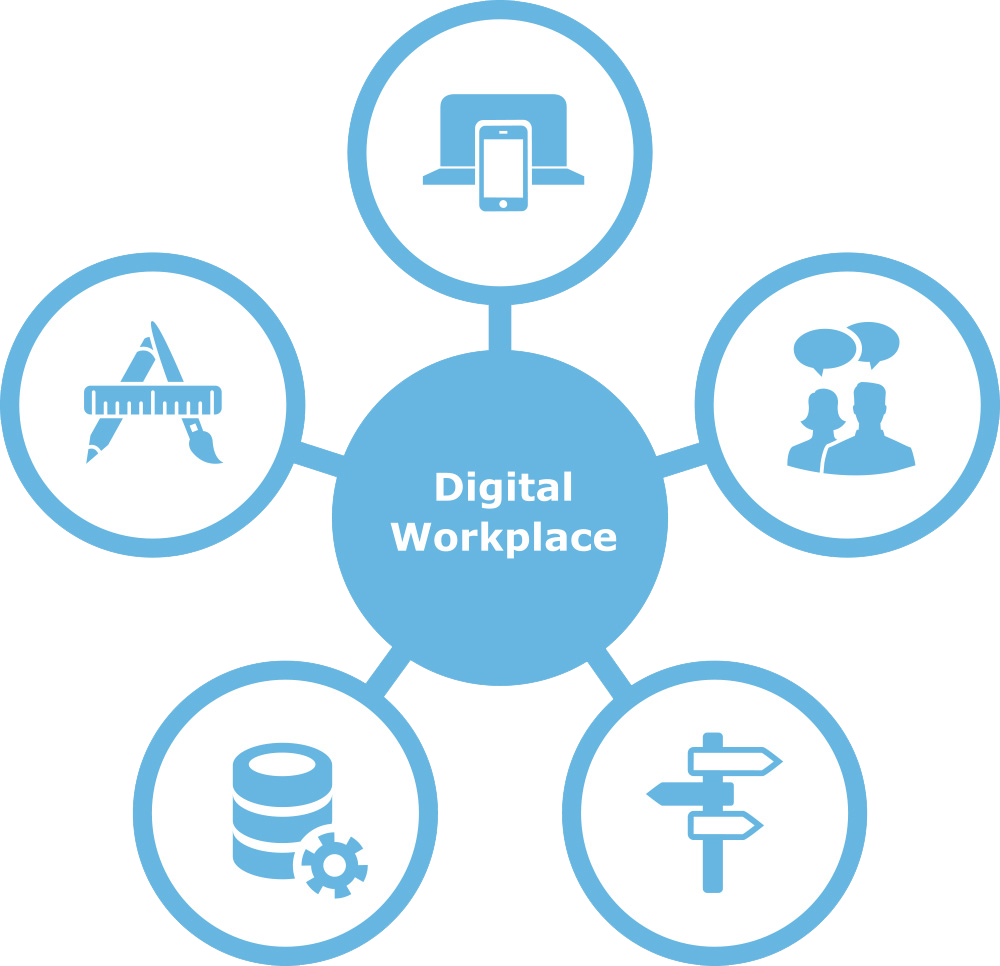 Intrexx
Intrexx
Affordable solution for web-based applications and enterprise portals development.
 Intrexx
Intrexx
Affordable solution for web-based applications and enterprise portals development.
Intrexx is a development and administration platform for web-applications and corporate portals from United Planet (Germany).
With the market-leading standard software you link people and information in processes that promote communication within the company, consolidate and simplify existing applications, manage documents and projects, and make your applications mobile.

Intuitive administration and development via drag'n'drop
Lots of templates and easy-to-use settings
Implementation of custom requirements with intelligent wizards within a short time scale
No need to have any programming skills
Corporate portal development within several hours
Integration with existing databases in less than 8 minutes
A number of adapters for integration with different apps and databases
Easy development of mobile apps for devices of any type
Powerful built-in index-based search engine
Dozens of ready-to-use apps
Develop and customize applications
Integrate existing data
Establish data relationships
Search for information
Automate processes
Design templates and menus
Manage users and permissions
Mobile access to all applications
Administer the system
Quick and easy integration of all existing data
Significant cost and resource savings for application development
10 times faster than all existing similar systems
Automation of workflows and processes
Fast development of mobile apps
A true cross-platform solution
Flexibility and capability to adjust to your business needs
Additional opportunities to use dozens of ready-made applications
Enterprise portal and mobile business support in one software solution

The Digital Workplace is a digital work environment. Here, employees find all of the information and processes they need to work successfully. They can share their knowledge quickly and with ease, and acquire help and information from colleagues.
Integration and collaboration are the foundation principles of the Digital Workplace: data from all implemented software systems (e.g. ERP, CRM, BI etc.) are brought together on a central platform. This not only makes information and applications available but also promotes cross-location collaboration and knowledge exchange.
The free flow of information in the Digital Workplace has positive effects on the flexibility and innovative energy of modern companies. At the same time, it facilitates employee involvement and satisfaction by providing the right information to the right people at the right time.

Mobility and flexibility are at the heart of the Digital Workplace. A multitude of employees can (and is going to) perform their allotted work in dynamic environments. It doesn't matter if they're in the office, at home or on the train on business. The employees have even more say as to which devices should be used for this and how and where they actually provide their work. For this, they need to be able to work independent of time and location, and access all of the data they need. As a central platform, the Digital Workplace guarantees this.
The home office and the principle of BYOD (Bring Your Own Device) are already approaches to the Digital Workplace. But the Digital Workplace goes event further. The daily work day is facilitated and becomes more flexible. As well as the technological basis, a holistic view of the workplace is important. The employee can decide where and when they work. The result is important, not the physical presence of the employee. With a Digital Workplace, employee satisfaction and motivation is therefore also increased: Work takes place where the employee feels comfortable and is productive.
For companies, this leads to greater efficiency and to an advantage in the contest for the most promising talents.

The ideal of the Digital Workplace is to be a central information and work platform. To reach this goal, it must be possible to integrate data from a variety of implemented software systems. Our range of available connectors allow this to be achieved with surprisingly manageable effort.
For example, this means that information from an inventory control system (ERP), such as SAP, can be integrated into the web interface of the Digital Workplace. This means that the information is available to all authorized users at any time and in any place. Data can't just be viewed here, but can of course also be edited and written back to the connected programs. The employees can find all functions in one place on the user interface of the Digital Workplace. As a consequence, they don't need to inconveniently and constantly switch between specialized applications.
Furthermore, the connectors bring individual specialized applications together. The architecture of the Digital Workplace becomes an interface between various programs. The result is high-interoperability of heterogeneous systems. The complexity of the integration is cleverly hidden to the end users. They come upon an optimal working environment: the front-end works seamlessly and facilitates access to all of the information and processes required.

The clear structure of the Digital Workplace accelerates work. The long-winded search for required documents and files is a thing of the past. Work processes are handled with greater ease can be automated to some extent.
Business processes run according to clearly defined workflows. With this, many tasks can be accomplished directly from the personal dashboard of the employees. This means that approval processes and reservations can be achieved with just a few mouse-clicks - without paper and quickly. And thanks to automatic reminders, important tasks will no longer be forgotten. Especially in the area of process optimization, the Digital Workplace provides much more than the classic intranet.
In the Digital Workplace, processes are handled in a standardized manner across the entire company, quickly and error-free. Especially with regularly occurring tasks, a great deal of time - and therefore also money - can be saved.

Using applications, the Digital Workplace can be expanded and modified as you'd like. This means that every company can individually decide which functions are required and then create these in a way suitable to the everyday work. Ready-made plugins or individually designed applications provide exactly the corresponding functions required.
The possibilities extend from simple processing of leave and travel expense requests all the way to project management. The applications are interlinked to the social components of the Digital Workplace. In this way, tasks can be commented on directly and employees can provide feedback to ideas and posts.
By using applications in a Digital Workplace, a personalized and individually customized platform is developed. Every employee is provided with their own personal dashboard where they can easily and quickly find their way round. Thanks to a role-based user management, every employee only sees the applications and documents for which he possesses read and write access. As a consequence, the employees only sees the information relevant to them in their individual view. This improves security, raises usability and increases productivity within a short space of time.

The flood of everyday emails is seen as the biggest problem in the internal communication by many employees. On the other hand, the Digital Workplace simplifies a company's internal communication considerably. It has access to elements from social media, just like those known from social networks from your private life. At the heart of this is the collaboration of people in teams, projects, or groups in a virtual space. Here, they can share documents, exchange knowledge and work solutions out together. And all of this across departments and locations.
Social collaboration ensures that communication is structured and organized clearly - depending on the strategic aim, either between employees (as a social intranet) or even with partners and customers (as a social extranet). For example, employees can ask questions which are then in turn answered by the respective experts in the company. In this way, the news feed is transformed into a living knowledge management. Here, documents can also be shared with the authorized colleagues, meaning they are easier to access and find.
This aspect of the Digital Workplace, however, doesn't just concern a technical platform when collaboration takes place. By using the software, a change in the business culture will not only be required but also facilitated and promoted. As a social business, the modern business bases itself on establishing networks, exchanging knowledge and encouraging innovation.